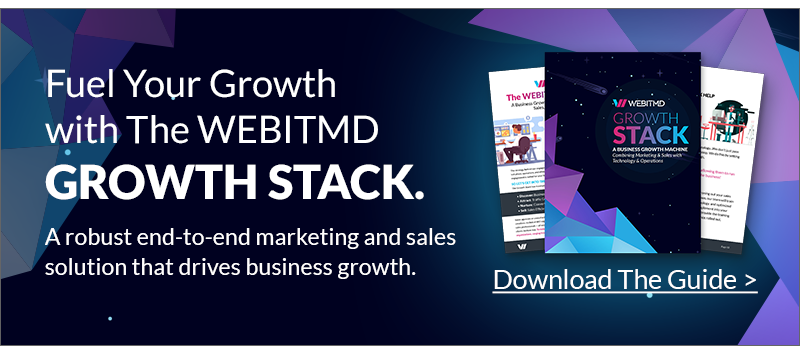Whether you are falling short on hitting your sales goals, or you are reaching your revenue targets but want to see more consistent growth year-over-year, the information you are about to read will be most helpful.
We already know that digital marketing services are where growing businesses need to invest. There are thousands of articles out there with data-backing arguments showing why traditional marketing will not help organizations hit their sales goals, so no need to regurgitate.
Here’s the real challenge: choosing a digital marketing agency offering growth strategies from a hefty list, and combing through the various strategies practiced by one agency to the next, can be very daunting. This is especially difficult when searching for the right agency and strategy designed to help YOUR organization gain greater engagement and sales.
Once you have found your ideal digital marketing agency, here are four ways to generate more engagement that leads to sales worth talking to your agency about!
1. Perform SEO According to Google RankBrain and Buyer-Focused Needs
We all know that SEO is the most popular strategy for gaining online visibility and drawing traffic to your website. However, unlike inbound marketing strategies, SEO is not known as a high-conversion service. But it can be.
A few months ago there was a Google RankBrain algorithm update that gave rankings increases to previously undervalued sites. At the same time, their competitors saw drops in rankings. RangBrain’s AI and machine learning components allow it to understand the emotional need behind every search query, and as it learns, the search engine knows which results to display. Therefore, your content needs to rank for specific buyer needs and by doing so it will also appease Google. So how do you do this? And how will high-ranking content garner sales?
Once you have created buyer personas and have a clear understanding of who your customers are, you will want to optimize your website with keywords that have a contextual relationship to buyer pains and your products. Keep in mind that this will likely include a combination of broad, more general keywords mixed with longtail, buyer-focused versions. The web page content as a whole on the page will show Google relevancy, and educate your buyers.
The idea is to rank for search terms using content that showcases your products as the best solutions to consumer needs, as opposed to shooting for high search volume keywords. For example, you could spend a tremendous amount of time, money and manpower ranking for a keyword like “camping tents” that will give you 50,000 clicks in a month with 100 sales. Or you could spend significantly less time and money ranking for need-based keywords like “red camping tent for four” or ‘insulated tents for winter camping”, get 10,000 clicks, and 1000 sales.
When using SEO as a way to boost website engagement that transforms into sales, your content needs to step away from traditional SEO, focus on buyer needs, and nurture readers with adjoined articles that feed into the SEO beast.
2. Use a Growth-Focused Blogging Strategy
Of course your blog will be an integral part of your SEO strategy for attracting organic traffic, but when creating the strategy you will want to make it completely growth-focused in order to convert readers into sales. It is ideal your blog protocol fits into creating a growth marketing strategy that offers measurable revenue gains in order to gauge top-performing content that actually converts.
Again, the same rules as mentioned in organic search will apply here. But to further resonate well with Google and your buyers, your blog should follow the cluster model.
Create a set number of blogs that speaks to each of your segmented buyer personas. Each blog should address a common pain point and showcase your products or services as the best solutions. This should be done based on stages of the buyer’s journey, each blog should have a unique title showcasing the pain point, and speak to customers within a specific context. When blogs are more focused and targeted to buyers, sales will follow.
3. Use Social Media for Generating Traffic, Audience Targeting and Sales Conversions
Social media platforms are ideal portals for leading traffic to your website, and while doing so, improve your SEO (social signals are sent back to Google that give your domain more power). They are also excellent resources for gaining deep insights into buyer personas to improve audience targeting. Additionally, social media allows for ideal places to share content with the best readers.
Unlike trying to attract organic traffic, social traffic comes from hubs you can access and therefore see exactly what matters to these groups of people, at the exact time you are engaging them. Create a social media persona, engage others in Facebook and LinkedIn groups, and learn what their true pain points are. Then write content that speaks to the masses, share with the main influencers in the group, and as you continue this process your engagement will go up, as will sales.
4. CRM Insights for Growth Marketing
If you have a comprehensive CRM with detailed analytics like HubSpot, you can access your leads and learn valuable insights about the people who click into your website. By seeing their entry point, where they spend the most time, and even top-level info such as their job role and company they work for (yes, HubSpot analytics give marketers this type of information) you can enhance your audience targeting strategy. For example, if you see that multiple people with Director of Logistics as their title are entering your site and they work for large corporations, you will know that creating custom content tailored to meet their needs will reach an audience likely to convert.
Maximizing Your Engagement and Sales
In order to really expand your reach and maximize your ability to consistently hit revenue goals, custom digital marketing growth stacks are ideal. These are a set of tools and strategies put together, with a deep understanding of how people engage your brand, and together they work in synch to achieve your organization’s goals. When SEO, inbound marketing, paid media and other strategies work in unison to ensure your year-over-year growth, you have a powerful marketing stack that garners results unlike any solo service. But not all businesses are cut out for the growth stack. Your goals, sales cycle, and internal structure must paint a picture that makes sense for a growth stack. Otherwise, a single or joint service of SEO and PPC would be more ideal for your unique needs.
Can a Custom Growth Stack Increase Site Engagement and Sales?
If you found value in this article and the idea of a growth stack has perked your interest, download our FREE guide on the WEBITMD Growth Stack. See how it aligns with your goals, and give us a call with your questions. We would love to learn about your business!










.jpg)



.jpg)





![5 Reports to Elevate Your HubSpot Sales Dashboard [+ Examples]](https://blog.webitmd.com/hs-fs/hubfs/Imported_Blog_Media/6-winning-examples-of-a-hubspot-sales-dashboard-2.png?width=767&name=6-winning-examples-of-a-hubspot-sales-dashboard-2.png)